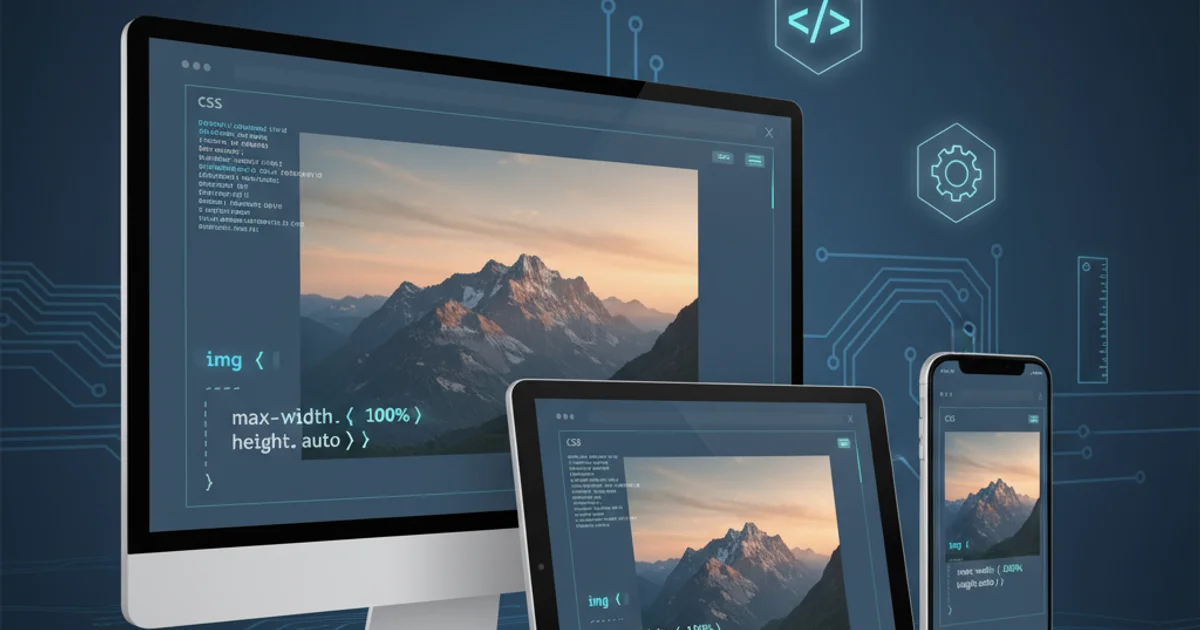Resize image proportionally with CSS?
Categories:
Mastering Responsive Image Resizing with CSS

Learn how to proportionally resize images using CSS, ensuring they adapt beautifully to any screen size without distortion or overflow.
In modern web development, creating responsive designs is paramount. Images, being a core component of most web pages, must adapt gracefully to various screen sizes and orientations. This article will guide you through the essential CSS techniques to proportionally resize images, preventing distortion and ensuring a consistent user experience across all devices.
The Basics: max-width and height: auto
The most fundamental and widely used method for proportional image resizing involves setting max-width: 100% and height: auto. This combination ensures that an image will never exceed the width of its parent container, and its height will adjust automatically to maintain its original aspect ratio. This prevents images from overflowing their containers or becoming distorted.
img {
max-width: 100%; /* Ensures the image doesn't exceed its container's width */
height: auto; /* Maintains the aspect ratio */
display: block; /* Removes extra space below the image */
}
Basic CSS for responsive image resizing.
display: block; to your image styles is a good practice. By default, images are inline elements, which can sometimes lead to a small amount of extra space below them. Setting display: block; removes this space and can help with layout consistency.Understanding the object-fit Property
While max-width: 100% and height: auto are excellent for basic responsiveness, sometimes you need more control over how an image fills a specific container, especially when the container has a fixed height or a different aspect ratio than the image. This is where the object-fit CSS property comes into play. It works similarly to the background-size property but for <img> or <video> elements.
flowchart TD
A[Image Element] --> B{Container Aspect Ratio Match?}
B -- Yes --> C[max-width: 100%, height: auto]
B -- No --> D{Desired Fit?}
D -- Fill Container --> E[object-fit: cover]
D -- Contain within Container --> F[object-fit: contain]
D -- Stretch to Fill --> G[object-fit: fill]
D -- Original Size --> H[object-fit: none]
D -- Scale Down if Larger --> I[object-fit: scale-down]Decision flow for choosing image resizing techniques.
The object-fit property has several values:
fill(default): The image is resized to fill the given dimension. If necessary, the image will be stretched or squished to fit.contain: The image is scaled down to fit within the container while maintaining its aspect ratio. It will be letterboxed if the aspect ratios don't match.cover: The image is scaled to fill the container, maintaining its aspect ratio. The image will be clipped if its aspect ratio does not match the container's.none: The image is not resized. It will retain its original size.scale-down: The image is scaled down tononeorcontain, whichever results in a smaller concrete object size.
.image-container {
width: 300px;
height: 200px;
border: 1px solid #ccc;
overflow: hidden; /* Important for 'cover' and 'contain' */
}
.image-container img {
width: 100%;
height: 100%;
object-fit: cover; /* Image will cover the container, cropping if necessary */
}
.image-container.contain img {
object-fit: contain; /* Image will fit inside, letterboxing if necessary */
}
Using object-fit to control how an image fills its container.
Advanced Scenarios: Background Images and Picture Element
For more complex scenarios, such as using images as backgrounds or serving different image resolutions based on device capabilities, other techniques are more appropriate.
Background Images
When using an image as a CSS background, properties like background-size and background-position offer similar control to object-fit.
background-size: cover;scales the background image to be as large as possible, ensuring the background area is completely covered by the image. Some parts of the image may be cut off.background-size: contain;scales the background image to the largest size such that both its width and its height can fit inside the content area.background-size: 100% auto;orauto 100%;allows you to control one dimension while the other adjusts proportionally.
.hero-section {
background-image: url('path/to/your/image.jpg');
background-size: cover; /* Ensures the image covers the entire section */
background-position: center center; /* Centers the image */
background-repeat: no-repeat;
height: 400px; /* Example fixed height */
width: 100%;
}
Responsive background image styling.
The <picture> Element
For truly optimized responsive images, the <picture> element allows you to provide multiple sources for an image, letting the browser choose the most appropriate one based on factors like screen resolution, viewport size, and image format support. This is ideal for art direction (cropping images differently for different viewports) or serving WebP/AVIF formats to compatible browsers while falling back to JPEG/PNG.
<picture>
<source srcset="large.webp" media="(min-width: 1200px)" type="image/webp">
<source srcset="medium.webp" media="(min-width: 768px)" type="image/webp">
<source srcset="small.webp" type="image/webp">
<img src="fallback.jpg" alt="A descriptive alt text for the image" style="max-width: 100%; height: auto;">
</picture>
Using the <picture> element for art direction and format optimization.
<img> tag within the <picture> element. This ensures that the image will still be displayed even if the browser doesn't support the <picture> element or any of the specified <source> formats.